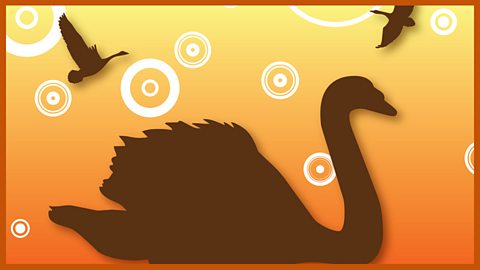The Emperor of China lived in the finest palace in the world. It was made of the purest, most precious porcelain and was so delicate that if you touched anything you had to be very careful not to break it.
The garden was full of lovely flowers with pretty silver bells tied to them. It was beautifully designed т and it was so big even the gardener had no idea where it ended. But if you kept on walking, you would come to a green forest with tall, lofty trees.
The forest ran all the way to the deep blue sea, where great ships sailed under the shadow of swaying tree branchesтІand in one of these trees lived a nightingale. She sang so beautifully that even the poor fisherman would stop mending his nets to listen.
тHow sweet that song is!т he would sigh whenever he heard it. Travellers from all over the world came to the Emperorтs city to admire his palace and garden. Some even wrote poems and books about the wonders they had seen and heard. Most wonderful of all, they wrote, was the nightingale who lived in a forest near the deep sea.
One day, a gift arrived from the mighty Emperor of Japan. It was one of the books that had been written about the palace and garden. As he sat in his golden chair, the Emperor was delighted to read how beautiful and impressive they were.
But when he came to the words ттІthe nightingale is the most beautiful of allт, he looked puzzled.тNightingale? I have never heard of a nightingale in my garden!т he said to his Lord-in-Waiting. тHow come the whole world knowsabout this except me?! I want you to find this bird and bring it to me so I can hear it sing for myself!т
The Lord-in-Waiting looked high and low for the mysterious nightingale. He went up stairs and down, through halls and passages, asking everyone he passed, but no-one had heard of it. Then just as he was about to give up, a little kitchen maid came up to him.
тI know the nightingale!т she said. тEvery evening I go home to care for my sick mother who lives by the seashore. When I return to the palace, I stop in the forest to rest and listen to the nightingaleтs song. Oh, itтs so lovely it brings tears to my eyes!Come with me, I will take you to her.тAll the palace servants followed as the kitchen maid led the way through the garden. тThere she is!т said a young courtier. тWhat a very loud noise for such a small creature!т
тThatтs a cow, not a nightingale,т replied the kitchen maid. тWe have a long way to go yetтІтThey carried on walking.тI can hear her!т said a serving girl. тHer song sounds like tinkling church bells.ттHmmm, those are frogs,т laughed the maid. тBut quiet now, weтre getting closeтІттLook! There she isт, said the maid - and she pointed to a little grey bird perched onthe bough of a tree.
тWhat an exquisite sound!т said the Lord-in-Waiting. тBut т er - I wasnтt expecting such a small, plain, simple creature. Never mind. Most excellent Nightingale!т he called out. тOur most gracious Emperor wishes you to sing to him. Will you come to the palace with us?т
тMy song sounds best in the green wood,т answered the nightingale. тBut I will do as you ask.тThe palace was specially decorated for the great occasion. The walls and floors of porcelain glittered in the light of a thousand lamps and beautiful flowers with little bells stood in the corridors. In the centre of the great hall was a golden perch for the nightingale to sit on.
The whole court was present, including the kitchen maid. As the Emperor nodded to the little grey bird to begin, all eyes turned to watchтІ The nightingale sang so sweetly that tears started rolling down the Emperorтs cheeks. тOh, how glorious!т he cried. тPlease, wear my gold slipper round your neck as a token of my thanksт.
тI have seen tears in the Emperorтs eyes,т answered the nightingale. тThat is a powerful gift т the greatest of them allт, and she sang even more enchantingly than ever. Everyone loved the nightingaleтs singing so much that the Emperor decided she was to stay at the palace.
The little bird was placed inside a specially made cage and twice a day she was allowed to fl y round the room with a silken string attached to her leg. She may have lost her freedom т but the whole of China was talking about her.
Whenever people met, one said тnightinт, and the other said тgale.т Then one day, the Emperor received a large parcel with the word тNightingaleт written on it. тAh - another book about our famous bird!т he said. But when his servants opened it, a magnificent casket was revealedтІ Inside the casket - was a nightingale. Only this nightingale wasnтt realтІ
Made of metal with a key to wind it up, this bird was clockwork. But what a magnificent clockwork bird it was, covered in diamonds, rubies and sapphires with a tail of silver and gold. Round itтs neck was a piece of ribbon with a note. тA nightingale from the Emperor of Japan т though it cannot compare with your nightingale,т the note read.
When the clockwork bird was wound up, it moved its tail up and down and sang out loud. тAhhh! Such an enchanting sound!т sighed the Emperor. тBring me the real nightingale so they can sing together т what a duet that will be!т
But the two birds didnтt sound as good together as the Emperor had hoped. The clockwork nightingaleтs song was mechanical and rather harsh compared to the natural beauty of the real birdтs songтІ
The clockwork bird had just one, rather complicated tune that it sang over and over т thirty three times to be exact - before it needed winding up again. But the Emperorтs Music Master was full of praise.
тIt sounds perfect to me, your Imperial Majesty!т he announced. тAnd with all itтs little cogs and wheels, itтs perfect on the inside too. In fact, itтs so perfect it should sing all by itself. You never know what a real nightingale is going to sing, but with this bird there will be no unexpected surprises. You get the same tune every time!т
тMaybe you are right,т said the Emperor. тBesides, itтs so much prettier and more sparkly to look at than that small grey bird. Oh т whereтs it gone?т No-one had noticed the nightingale fl y out of the open window, back to the green forest.
тWhat strange behaviour,т said the Emperor. тThe ungrateful creatureт added the Lord-in-Waiting. тThat nightingale is banished from my empire, never to return!т announced the Emperor grandly. тNo matter, for we have the best bird of all right here. Letтs listen to it again!т
The next day, the Music Master paraded the clockwork nightingale before a great crowd that had been summoned to hear it sing. Everyone was very impressed т all that is except the poor fisherman. тIt sounds pretty enough,т he thought, тand the tune is quite similar. But somethingтs not quite rightтІт
The clockwork bird was placed on a silk cushion by the Emperorтs bed and surrounded by gifts of gold and precious stones. Meanwhile, the Music Master wrote a long book full of difficult Chinese words about the wonderful new bird which everyone was made to read it. Before long, they had heard the song so many times they all knew it by heart. тLa la la, zing zing, whirrrr!т т even the Emperor sang along.
But one evening, as he lay in bed listening to the mechanical tune yet again, a harsh noise suddenly interrupted the melody. It sounded like the little wheels and cogs inside the clockwork bird were going wild! Oh dear. Something definitely wasnтt rightтІ
As the singing stopped, the Emperor sprang out of bed. тWatchmaker!!т he cried. тMy clockwork nightingale has broken and I need you to fi x her at once!т The watchmaker took the metal bird apart and poked and prodded around inside.
тItтs sung so much that itтs getting worn out, Iтm afraid,т he sighed. тIf it gets moredamaged, the tune may never play again.т
It was a terrible upset. Although the Music Master pretended to everyone that the bird was fine, from now on, it was only allowed to sing once a year т and even that was risky.Five years passed and a great sadness slowly fell over China. The people were very fond of their Emperor т but by now he was very ill. So ill that a new Emperor had been chosen to be crowned when he died.
The Emperor lay in his royal bed. He was so cold and pale that everyone thought he was dead. All was silent and still in the empty room. A window stood open and the moon shone down upon his still body and the clockwork bird by his side.
Suddenly, the Emperor called out. тMusic!т he cried faintly. тSing, my precious little golden bird! I have given you precious gifts. I have even hung my golden slipper round your neck. Sing! Sing!!т
But the bird stayed silent. Because there was no one to wind it up, it couldnтt sing a note.Suddenly the sound of sweet music came through the open window. Outside, on the bough of a tree, sat the nightingale. тI heard you were ill,т she said, тso I have come to sing to you т and bring you hope.т
As she carried on singing, the shadows grew paler and paler. The Emperor moved his arms and legs a little. He was starting to feel a bit better.
Meanwhile, the nightingale carried on singing. She sang of white roses, fresh sweet grass and the perfume of the trees that blew on the breezeтІ
The Emperor gently opened his eyes. тThank you, little bird,т he sighed. тI banished you from my empire, yet you have banished death from my heart with your sweet song. How can I reward you?т
тYou have already rewarded me,т said the nightingale. тI shall never forget the tears in your eyes the first time I sang to you. That is a powerful gift т the greatest of them all. But sleep now and grow strong and well. I will sing to you again.т
As she sang, the Emperor fell into a sweet sleep. When he woke up, the sun was shining and he felt strong and alert. But not one of his servants was by his side. They still thought he was dead.
тPlease, stay with me always,т the Emperor pleaded to the nightingale. тYou need sing only when you want to. Meanwhile I shall break that clockwork bird into a thousand piecesт.
тNo, donтt do that,т replied the nightingale. тIt kept going for as long as it could. Keep it here. I canтt live in the palace and build my nest, but in the evening I will sit on the bough by your window and sing to youтІ
Iтll make you feel happy - but I will also make you feel thoughtful. I shall tell you about the lives of the people in your empire you never meet т like the poor fisherman and the little kitchen maid. I shall tell you about people who are happy and those whofeel sad too.
But you must promise me one thing.т тEverything!т said the Emperor. тNo т just this one thing,т repeated the nightingale. тDonтt let anyone know you have a little bird who tells you everything. Letтs keep it our secretт.
And with that, the nightingale flew away. When the servants finally arrived to carry their dead Emperor away, they wereastonished to see him standing in his fine velvet gown. The colour had returned to his cheeks and he looked fit and healthy.
тGood heavens!т they cried in surprise.
тGood morning!т he answered with a happy smile.
Synopsis
Sir Derek Jacobi reads an adaptation of 'The Nightingale' by Hans Christian Andersen
The Emperor of China has a wonderful porcelain palace and a garden that goes on for miles. The garden leads to a great forest, in which a nightingale lives. The nightingale sings so beautifully that visiting travellers are moved to write about her song.
One day the emperor reads one of these written accounts and is surprised, for he has not heard the nightingale himself. He orders that the nightingale is brought to him, and a kitchen maid leads the Emperor's servants to where the bird can be found. They are surprised that the bird is so small and grey, but when she sings for the Emperor he is moved to tears. The nightingale is to live in a cage at the palace so that the Emperor can continue hearing her song.
One day the Emperor receives a clockwork, jewelled nightingale as a gift. It also sings well, but only one rather mechanical tune. The real nightingale escapes and flies back to the wood. The Emperor thinks this does not matter now that he has the mechanical nightingale, but he listens to it so much that it breaks down and can only be played once a year.
Soon the Emperor falls ill and is dying. He calls out for music, but there is nobody to wind the clockwork nightingale. The real nightingale returns to the trees outside and her song revives the Emperor. She sings to him about the people in the empire that he never meets and so he becomes a more informed and better Emperor.

Ь§
Ь§
Curriculum guidance
Tales of Hans Christian Andersen can be used to target a range of Reading and Writing objectives from the KS2 National Curriculum programme of study for English across Y3 to Y6 in England, Wales and Northern Ireland and Second Level of the Curriculum for Excellence in Scotland. Specific objectives include increasing pupilsт familiarity with a range of texts тincluding fairy storiesт and тtraditional storiesт.
Pupils have the opportunity to listen to and read a selection of Andersenтs stories - especially adapted for the age group - and respond through a range of speaking and writing activities. Full details of curriculum links and follow up activities are included in the Teachersт Notes.
Some of Hans Christian Andersen's tales have a dark and pessimistic theme. This means that careful selection of texts is required to ensure age-appropriateness. Please see the teachers' notes below for full synopses and suggestions for use in the classroom.

Ь§
Ь§
Background
- First published in 1843, it is thought by many to be Andersenтs tribute to the opera singer Jenny Lind, with whom Andersen was in love.
- It was unrequited, with Jenny thinking of Andersen as a brother, and herself being in love with the composer Chopin.
Reading / listening comprehension
- Why do you think the Emperor had not heard the nightingale before?
- Where will it be more appropriate to hear a nightingaleтs song т inside the palace, or in the forest? Why?
- In what ways does the clockwork nightingale compare to the real one? How is it different?
- Why do you think the Emperor over-uses the clockwork nightingale, so much that it breaks down?
- Why does the real nightingale return to the Emperor?
- How will the nightingaleтs song help him to be a better Emperor?
More from the series Tales of Hans Christian Andersen
5. The Wild Swans. audio
Penelope Wilton reads an adaptation of 'The Wild Swans' by Hans Christian Andersen.

7. The Ugly Duckling. audio
Penelope Wilton reads an adaptation of 'The Ugly Duckling' by Hans Christian Andersen.

8. The Fir Tree. audio
David Tennant reads an adaptation of 'The Fir Tree' by Hans Christian Andersen.
